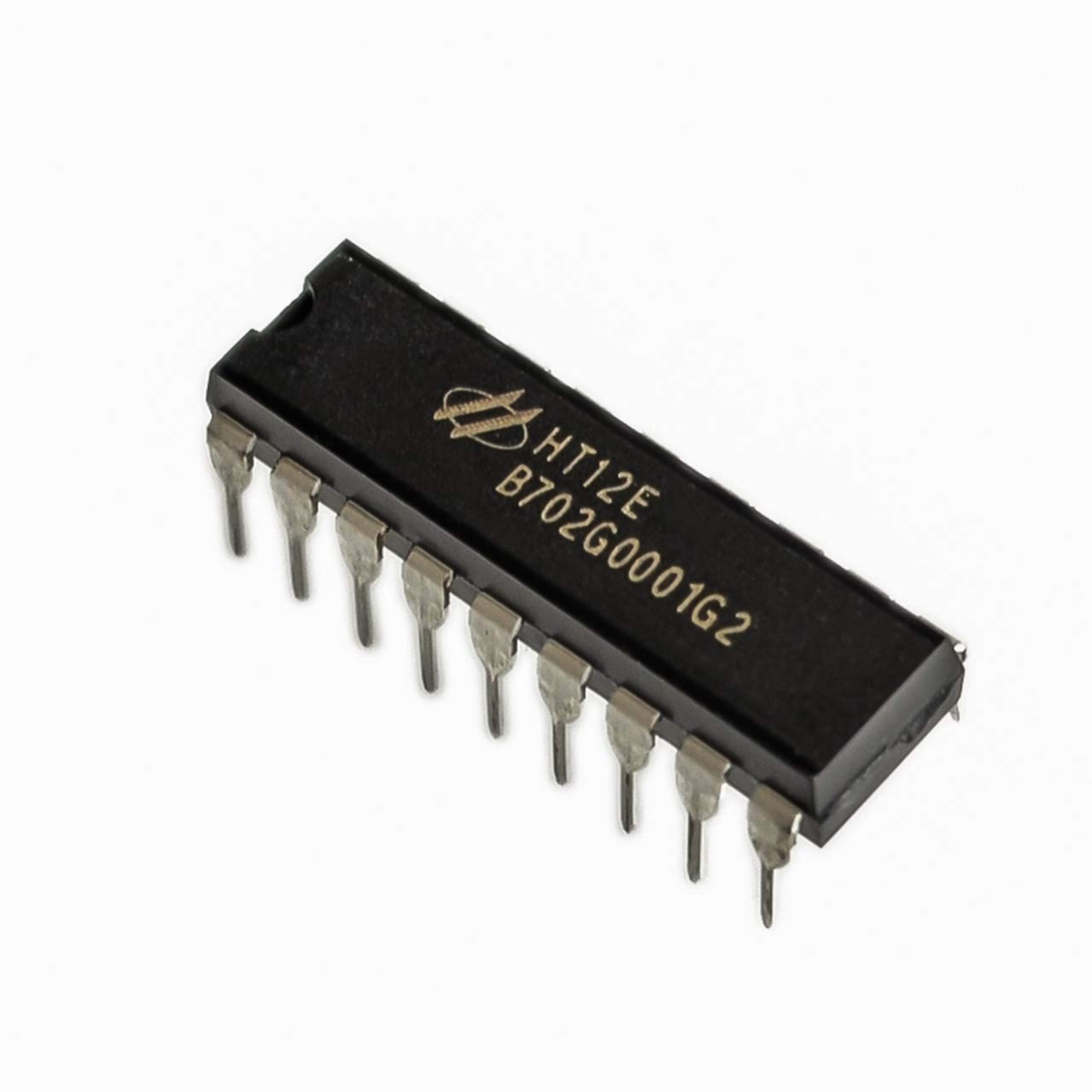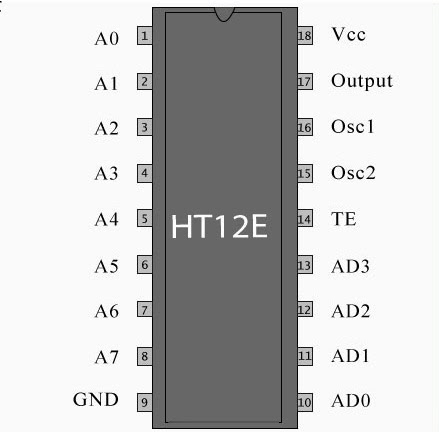

4.jpeg&width=620&quality=80)


4.jpeg&width=172&quality=80)


4.jpeg&width=300&quality=80)
HT12 E Encoder IC DIP
The HT12E Encoder ICs are series of CMOS LSIs for Remote Control system applications. They are capable of Encoding 12 bit of information which consists of 8 address bits and 4 data bits. Each address and data input is externally programmable or fed in using switches.
₹ 72 ₹99
99
Add FAQ
The HT12E is a 12-bit encoder integrated circuit (IC) developed by Holtek Semiconductor, commonly used in wireless communication systems. It is designed to encode data (such as control signals or sensor data) into a serial format, which can then be transmitted over RF (Radio Frequency) channels to a corresponding decoder (like the HT12D).
The HT12E is typically paired with the HT12D for applications like remote controls, wireless data transmission, home automation, and sensor networks.
Key Features of HT12E:
- 12-bit data encoding: It encodes 12 bits of data into a serial output, typically 8 address bits and 4 data bits. The address is used to prevent data from being misinterpreted by unintended receivers.
- Low Power Consumption: The HT12E is designed for low-power applications, making it ideal for battery-operated systems.
- Built-in Oscillator: The IC has an integrated oscillator that works with external resistors and capacitors to set the operating frequency for communication.
- Serial Data Output: The encoded data is sent out in a serial format, which can be transmitted using RF modules (e.g., 433 MHz or 315 MHz).
- Address Pins (A0 to A7): The IC uses 8 address pins (A0 to A7) to set the address for the device, ensuring communication only happens between matching encoder and decoder pairs.
- Transmit Enable Pin (TE): The TE pin must be pulled low to enable data transmission. It controls when data is sent out.
- External Oscillator: The IC uses an external resistor and capacitor to configure the transmission frequency, which can be adjusted to suit the needs of the application.
- Transmission Range: When paired with RF modules, the HT12E allows communication over long distances, depending on the RF hardware used.
Pin Configuration of HT12E:
- VSS (Pin 9): Ground
- VDD (Pin 18): Positive power supply (typically 5V)
- A0 to A7 (Pins 1–8): Address pins (used to set a unique address for the encoder)
- AD8 to AD11 (Pins 16-19): Data input pins (D0 to D3), where data to be transmitted is provided
- DIN (Pin 14): Serial Data Input (used to input data to be encoded)
- TE (Pin 15): Transmission Enable (used to start or stop data transmission)
- V0 (Pin 13): Oscillator pin, connected to an external resistor and capacitor to set transmission frequency
- OSC (Pin 12): Oscillator pin for controlling frequency
- DOUT (Pin 17): Serial Data Output, where the encoded data is sent out.
Working Principle:
- The HT12E encodes 12 bits of data, which are divided into:
- 8 address bits (A0 to A7) that are used to identify the receiver device, preventing false data reception.
- 4 data bits (D0 to D3) that represent the actual information (like commands or sensor readings).
- The data is encoded into a serial format, suitable for transmission via an RF module (such as 433 MHz or 315 MHz modules).
- When the TE pin is pulled low, the IC activates and begins encoding and transmitting the data. The encoded data is then sent out through the DOUT pin.
- The receiving end, using an HT12D or a similar decoder IC, will decode the serial data back into its original parallel format, where it can be read and processed.
Typical Applications:
- Wireless Remote Controls: For controlling devices such as TV remotes, garage doors, and other appliances.
- Home Automation: To send data between sensors and controllers in smart homes.
- Security Systems: For transmitting signals from motion sensors, door/window sensors, or alarm systems.
- Wireless Data Transmission: For sending control or sensor data wirelessly over a short to medium range.
- Wireless Keypads or Entry Systems: Used in remote control-based security systems or keyless entry devices.
Advantages of HT12E:
- Cost-Effective: It's affordable and easy to implement for low-cost wireless communication systems.
- Low Power: Perfect for battery-powered devices, thanks to its low-power consumption.
- Simple to Use: The device has simple logic for encoding and is easy to interface with microcontrollers like Arduino or PIC for custom applications.
How It Works with HT12D:
When paired with the HT12D, the HT12E is used for encoding the data (usually commands or sensor information) in a format that the HT12D decoder can interpret. The encoder (HT12E) will take parallel data from the microcontroller or sensors, encode it into a serial format, and send it via an RF module. The receiver, using an HT12D, will decode the serial data back into parallel form for the microcontroller or other output devices to process.
The HT12E is a popular choice for RF communication in simple wireless systems because of its ease of use, low power consumption, and affordability.

0 Reviews For this Product












2.jpeg&width=225&quality=80)
2.jpeg&width=225&quality=80)
.jpeg&width=225&quality=80)

